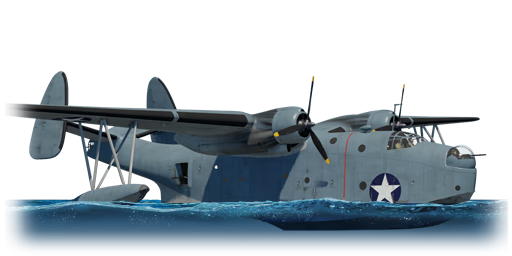

Aviation
PBM-3 "Mariner"
II
Rank
AB
3.0
RB
3.0
SB
3.0
Battle rating
USA
Research country
Bomber
Main role

Premium vehicle
Status
General information
Flight performance
Max speed
at 3,962 m
349323366333 km/h
Rate of Climb
4.93.56.53.5 m/s
Turn time
3435.633.334.8 s
Max altitude
6,200 m
Takeoff Run
585 m
Landing
flaps
flaps
Take-off
flaps
flaps
Combat
flaps
flaps
Air
brake
brake
Gear
control
control
General characteristics
Crew
7 persons
Engine
Length
24 m
Wingspan
36 m
Wing Loading
137 kg/m²
Weight:
Base weight
13.714.1213.3614.05 t
Fuel in main tanks
5.62 t (4h 15m)
Limits:
Max Speed Limit (IAS)
405 km/h
Mach Number Limit
0.75 M
G limit
≈ -2/5 G
Flap Speed Limit (IAS)
L / T / C
280 / 325 / 333 km/h
Defensive armament
5 × Turret — 12.7 mm M2 Browning machine gun
Ammunition
2,100 rounds
Fire rate
750 shots/min
One-second Burst Mass
0.54 kg
| Belt | Belt filling | Armor penetration (mm) at a distance: | |||||
|---|---|---|---|---|---|---|---|
| 10 m | 100 m | 500 m | 1000 m | 1500 m | 2000 m | ||
| T/AP/I/AP-I | 30 | 27 | 20 | 13 | 9 | 6 | |
| AP/AP/AP/T | 30 | 27 | 20 | 13 | 9 | 6 | |
| AP-I/AP-I/AP-I/T | 28 | 26 | 18 | 11 | 7 | 4 | |
Suspended armament
Setup 1
12 × 100 lb AN-M30A1 bomb
Setup 2
8 × 500 lb AN-M64A1 bomb
Setup 3
8 × 1000 lb AN-M65A1 bomb
Setup 4
8 × 1600 lb AN-Mk 1 armor-piercing bomb
Setup 5
8 × 1000 lbs Type A Mark I aircraft laid magnetic mine
Economy
Repair cost
AB
557 

RB
3,864 

SB
1,934 

Crew training
4,800 

Experts
32,000 

Aces
250 

Research Aces
440,000 

Reward multiplier
AB / RB / SB
 2 x (55 / 190 / 205) %
2 x (55 / 190 / 205) % 
 2 x 124 %
2 x 124 % 

Premium vehicle
All modifications are unlocked
Flight performance | |
|---|---|
Weaponry | ||
|---|---|---|
Rating by players
You must play more than 3 battles for the last week and more than 10 battles in a vehicle to rate it.
Like:
15
Flight performance:
Not enough ratings
Survivability:
Not enough ratings
Aerial combat:
Not enough ratings
Ground attack:
Not enough ratings
Balance:
Not enough ratings
Tips & Tricks
This space is currently empty
Do you know any interesting vehicle features?
Loading...
No articles about this vehicle yet
Become the first author and get rewards!
Write a guide, tell about interesting historical facts, make a tutorial or simply an interesting post.
No more content